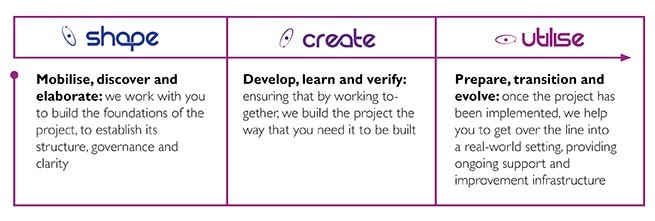Having the right people in the right place at the right time sounds easy. In largescale transport organisation, effective scheduling is crucial
At the heart of workforce management sits the simple sounding task of scheduling. Your organisation has shifts to fulfil and a pool of workers to fulfil them. Add staff to the rota and away you go. Such shift patterns can be sacrosanct across organisations of any size, providing clarity to workers, management and administrators alike. In largescale transport organisations, however, there are several moving parts to consider and shift patterns can be thrown off course by anything from weather to equipment failure and cancellations in the supply chain.
This blog aims to take a closer look at scheduling in transport organisations. It’s a topic we’ve covered in greater detail in our recent white paper, Tackling workforce management complexities in transport. If you would like to explore the topic in greater detail, you can download a free copy here.
There are myriad tasks that need completing across the transport industry. The complication introduced to the scheduling process often requires a lot of manual work by administrators and schedulers. People fall ill, take holidays and external events can throw a schedule completely off kilter.
Automation in workforce management
Automation of scheduling can greatly reduce the administrative burden. At its most prosaic, automation can simply assign workers to shifts in advance. This can be set out indefinitely, with new workers swapped in for departing/unavailable members of staff easily. Such a process can consider your bespoke business rules and any other factors such as the working time directive and fatigue management.
Where automation can lend a vital hand is in times of strain. We’ve seen examples, notably during the Covid pandemic, of vast swathes of a workforce being absent at once. Where a manual process exists, this resulted in inevitable cancellations of services. With carefully configured automation, it is possible to be more agile in the face of disruption.
Where a worker is absent, having a central system and a central view of your entire workforce enables swift consideration of replacements. This works for smaller examples, too. For example, if a train is delayed and members of crew onboard it are required to meet another service which they will now miss, how can this be handled?
An automated process enables identification of other members of staff who are nearby and can be reassigned, whilst at the same time handling all communications with staff members. The staff who have been delayed can then be reassigned to other tasks, ensuring that their shift isn’t wasted.

Variable demand and moving parts
Another factor to consider in the transport industry is variable demand and moving parts. A high level example of this is the change in train timetables during the Christmas period. Fewer customers means less demand for services, therefore, services can be reduced to ensure more efficient use of the network and staff time.
A more short-term example of this is in shipping. Where a port is expecting a shipment, staff need to be prepared to meet it to initiate the unloading and loading of it. Variation is frequent in such a scenario, since ships can be diverted at a moment’s notice to other ports due to factors such as storms. Another example would be the blockage of the Suez Canal. This can leave a port with a full roster of staff without a function to fulfil. This is a waste of time, money and staffing resources.
Mapping out the changes caused by variable demand in a central system can help to understand its implications. Factors such as cost can be calculated and your response to it can be better informed. Understanding where the risks of variable demand are most likely to occur can help mitigate its impact.
Another example is with revenue protection officers on trains. Understanding the demand for services helps to better utilise them. There’s little point, for example, scheduling ticket inspectors during rush hour to major stations, since moving through the train is all but impossible. Similarly, there are more likely to be barriers at major stations, so working out the best deployment of such staff is more likely to realise the ultimate aim of their work.
Overlaying tasks onto shifts
Establishing a schedule is one thing. Rosters can be worked out well in advance and communicated to staff. But what happens when they show up on the day? Often the set number of employees turn up and discover the specifics of their tasks at that point.
Utilising a workforce management system such as Cygnum helps organisations to understand the specifics of the tasks that need be fulfilled during a shift. This helps organisations to better prepare aspects such as equipment required, time needed to complete the task and where exactly they need to be.
This helps to drive better understanding and efficiency through shifts and tasks. Matching specific skills and experiences to not only shifts, but also tasks, better ensures that the right people are performing the right tasks.
Conclusion
Scheduling can be a complicated and nuanced process, especially across largescale organisations. With several moving parts, variable demand, unpredictable disruptions and the usual ebb and flow of workforce absences, managing the process can be extremely complicated. This can result in inefficiency and poor service delivery.
Introducing automation, clear communication and overlaying tasks onto shifts helps to better understand your workforce the tasks required of them and more accurately assign staff to tasks based on their skills, experience, training, availability and geographic location.
This is a topic that we’ve explored in greater detail in our recent white paper, which you can download freely here. Alternatively, if you would like more information on how Cygnum can help you with your workforce management requirements, please visit our website.











